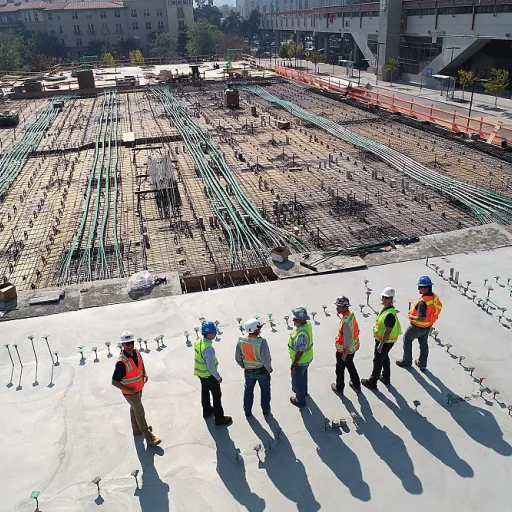
Understanding hierarchical structures in Arabian Emirate companies
Layers of Authority and Their Impact on Decision Making
In many Arabian Emirate companies, hierarchical structures are the backbone of organizational processes. These structures are characterized by multiple layers of authority, where each level has its own set of responsibilities and decision-making powers. This approach helps ensure that decisions are made efficiently and that employees understand their roles within the organization.
Hierarchical organizations often resemble a pyramid, with senior management at the top and various teams or departments forming the base. This setup allows for clear lines of authority and accountability, which is crucial for effective decision making. However, it can also create challenges, such as slower response times and potential bottlenecks in the decision making process.
- Clear authority: Each layer in the organization has defined authority, making it easier to assign tasks and responsibilities.
- Structured communication: Information typically flows from the top down, which can help maintain consistency but may limit upward feedback.
- Defined processes: Hierarchical decision making relies on established procedures, ensuring that decisions align with organizational goals.
For office managers, understanding these hierarchical structures is essential. They act as a bridge between upper management and employees, ensuring that decisions are communicated effectively and that teams feel supported. This role becomes even more important in organizations where the decision making process involves several layers and requires coordination across departments.
While hierarchical organizations offer stability and control, they also present unique challenges. Employees may sometimes feel disconnected from the decision making process, especially in larger organizations with many layers. Addressing these challenges requires not only a solid grasp of the organizational structure but also strategies for effective communication and employee engagement.
To explore how effective communication can enhance decision making and employee engagement in hierarchical organizations, you can read more about how DEI newsletters can enhance communication in Arabian Emirate companies.
The role of office managers in decision making
Key responsibilities of office managers in hierarchical organizations
In hierarchical organizations, office managers play a central role in the decision making process. Their position often sits between upper management and operational teams, acting as a bridge across multiple layers of authority. This unique placement requires a deep understanding of organizational structures and processes, as well as the ability to interpret and implement decisions from above while ensuring teams below are aligned and motivated.
- Facilitating communication: Office managers are responsible for ensuring that information flows smoothly between different layers of the organization. This includes relaying strategic decisions from senior leadership to employees and collecting feedback or concerns from teams to share upwards.
- Implementing decisions: Once a decision is made at the top, office managers oversee its execution. They break down complex directives into actionable tasks for their teams, making the process more manageable and ensuring clarity.
- Supporting employees: By understanding the challenges faced by teams, office managers can advocate for resources or changes needed to improve response times and overall efficiency. This helps employees feel valued and heard within the organization.
- Maintaining organizational processes: Office managers ensure that daily operations align with the company’s hierarchical structures. This includes monitoring compliance with policies, managing workflows, and adapting to new organizational changes.
Challenges and opportunities in decision making
Office managers in hierarchical organizations often encounter challenges like balancing authority with initiative. While they must respect established processes and authority, they are also expected to show leadership and propose improvements. Navigating these expectations requires strong communication skills and a clear understanding of the decision making process within the organization.
For those seeking practical solutions, adopting digital tools can streamline tasks and support paper free operations. For example, learning how to access your Right Signature login efficiently in an Arabian Emirate company can help office managers manage approvals and signatures more effectively, reducing bottlenecks in hierarchical decision making.
Ultimately, office managers are crucial to making hierarchical organizations function smoothly. Their ability to interpret, implement, and sometimes challenge decisions ensures that the organization remains agile and responsive, even within a structure defined by multiple layers of authority.
Communication challenges in hierarchical organizations
Barriers to Clear Communication in Multi-Layered Organizations
In hierarchical organizations, especially those with multiple layers of authority, communication can become a complex process. The structure itself, while designed for clarity and order, often introduces challenges that can slow down decision making and affect how employees feel about their roles. Understanding these barriers is essential for office managers aiming to ensure effective decision making processes.
- Information Filtering: As messages move up or down the organizational hierarchy, they may be filtered or altered. This can lead to misunderstandings, incomplete information, or even the loss of important details, which impacts the quality of decisions.
- Response Times: The presence of multiple layers in hierarchical structures often means that requests or feedback must pass through several levels of authority. This can delay responses and slow down the overall decision making process, making it harder for teams to act quickly.
- Authority and Initiative: Employees may hesitate to share ideas or concerns, fearing that their input will not be valued or that it might disrupt the established order. This can limit innovation and reduce the effectiveness of organizational processes.
- Cultural Nuances: In Arabian Emirate companies, cultural expectations around respect for authority and indirect communication styles can further complicate the flow of information. Employees might avoid direct feedback, making it challenging for office managers to get a clear picture of what is happening on the ground.
These challenges are not unique to any one organization. They are common across hierarchical organizations, whether you are solving a crossword clue about decision making or navigating real-world organizational processes. The key is recognizing these barriers and actively working to address them, ensuring that both upward and downward communication are as transparent and efficient as possible.
For office managers looking to optimize their teams' performance and streamline decision making, exploring strategies for product and sales optimization can provide practical insights into improving communication and organizational efficiency.
Strategies for effective upward and downward communication
Building Clear Communication Channels
In hierarchical organizations, especially those with multiple layers like many in the Arabian Emirates, effective communication is essential for smooth decision making. The structure of these organizations often creates both opportunities and challenges for office managers and teams. Ensuring information flows efficiently up and down the hierarchy is a key part of the organizational process.
Common Barriers and Solutions
- Information Bottlenecks: With several layers of authority, messages can get delayed or distorted. This can slow down response times and impact the quality of decisions.
- Unclear Roles: Employees may be unsure about who to approach for approvals or feedback, making the decision making process less efficient.
- Paper Free Processes: Moving towards digital communication tools can help reduce paperwork and make organizational processes more transparent and accessible for everyone.
Practical Steps for Office Managers
- Encourage regular team meetings to clarify decision making processes and ensure everyone understands their role in the organization.
- Use clear and concise communication, avoiding jargon that might confuse employees at different layers of the hierarchy.
- Implement feedback loops, so employees feel heard and can contribute to effective decision making.
- Adopt digital tools for sharing updates, which supports a paper free environment and helps track the progress of decisions.
Making Communication Inclusive
For office managers, understanding the unique challenges of hierarchical structures is crucial. By fostering open communication and ensuring that all employees, regardless of their position, have access to the information they need, organizations can create a more responsive and agile environment. This approach not only improves the making process but also helps teams feel valued and engaged in the organization’s success.
| Challenge | Strategy |
|---|---|
| Slow response times | Streamline communication channels and clarify authority levels |
| Misunderstandings | Use clear language and confirm understanding at each layer |
| Employee disengagement | Encourage feedback and recognize contributions in the making process |
Balancing authority and initiative
Finding the Right Balance Between Control and Initiative
In hierarchical organizations, especially those with multiple layers like many Arabian Emirate companies, balancing authority and initiative is a daily challenge. The organizational structures are designed to ensure clear lines of responsibility, but this can sometimes slow down the decision making process. Employees may feel hesitant to take initiative, waiting for approval from higher layers before moving forward. This can impact response times and overall effectiveness.
- Authority: In a hierarchical organization, authority is often centralized. This means that key decisions are made at the top, with each layer below responsible for implementing those decisions. This structure helps maintain consistency and control, but can create bottlenecks if not managed carefully.
- Initiative: Encouraging initiative within teams is essential for effective decision making. When employees understand the organizational processes and feel empowered, they can contribute ideas and solutions without always waiting for direct orders. This is especially important in fast-paced environments where quick decisions are needed.
Organizations that succeed in balancing these elements often:
- Provide clear guidelines on when employees can make decisions independently
- Offer training to help teams understand the decision making crossword clue—knowing when to escalate and when to act
- Recognize and reward initiative, ensuring employees feel valued for their contributions
- Use paper free tools and white paper documentation to clarify processes and reduce ambiguity
Understanding the challenges of hierarchical decision making is key. When authority is too rigid, innovation can suffer. When there is too much autonomy, consistency and control may be lost. The answer, like a mini crossword, is to find the right fit for your organization. By ensuring that both authority and initiative are respected, office managers can help teams navigate the layers of the organization and improve the overall making process.
Adapting to cultural nuances in the Arabian Emirates
Respecting Local Values in Organizational Processes
In the Arabian Emirates, understanding and respecting cultural nuances is essential for effective decision making in hierarchical organizations. The region’s unique blend of tradition and modernity influences how authority is perceived and how decisions are communicated across multiple layers of an organization. This cultural context shapes the way employees feel about their roles and responsibilities, especially in organizations with clear hierarchical structures.
Key Cultural Considerations for Office Managers
- Respect for Authority: Authority is highly valued, and decisions often flow from the top down. Office managers must ensure that the decision making process honors these expectations while encouraging input from teams.
- Indirect Communication: In many hierarchical organizations, communication tends to be indirect. Office managers need to be attentive to subtle cues and ensure that messages are clear without being confrontational.
- Collective Responsibility: Decision making often involves consensus within teams or departments. This can slow response times but helps ensure that organizational decisions are accepted and respected by all layers.
- Relationship Building: Building trust and strong relationships is crucial for effective decision making. Office managers should invest time in understanding their teams and fostering a collaborative environment.
Practical Steps for Navigating Cultural Nuances
| Challenge | Strategy |
|---|---|
| Ensuring clarity in hierarchical decision processes | Use clear, respectful language and confirm understanding at each organizational layer |
| Balancing authority with employee initiative | Encourage employees to share ideas within the accepted organizational structures |
| Adapting to different communication styles | Provide training on effective communication and cultural awareness for teams |
Office managers play a vital role in making hierarchical organizations more inclusive and responsive. By adapting to local cultural expectations and understanding the clues that guide decision making, managers can help ensure that organizational processes are both efficient and respectful. This approach not only supports effective decision making but also helps employees feel valued and engaged within the organization.













